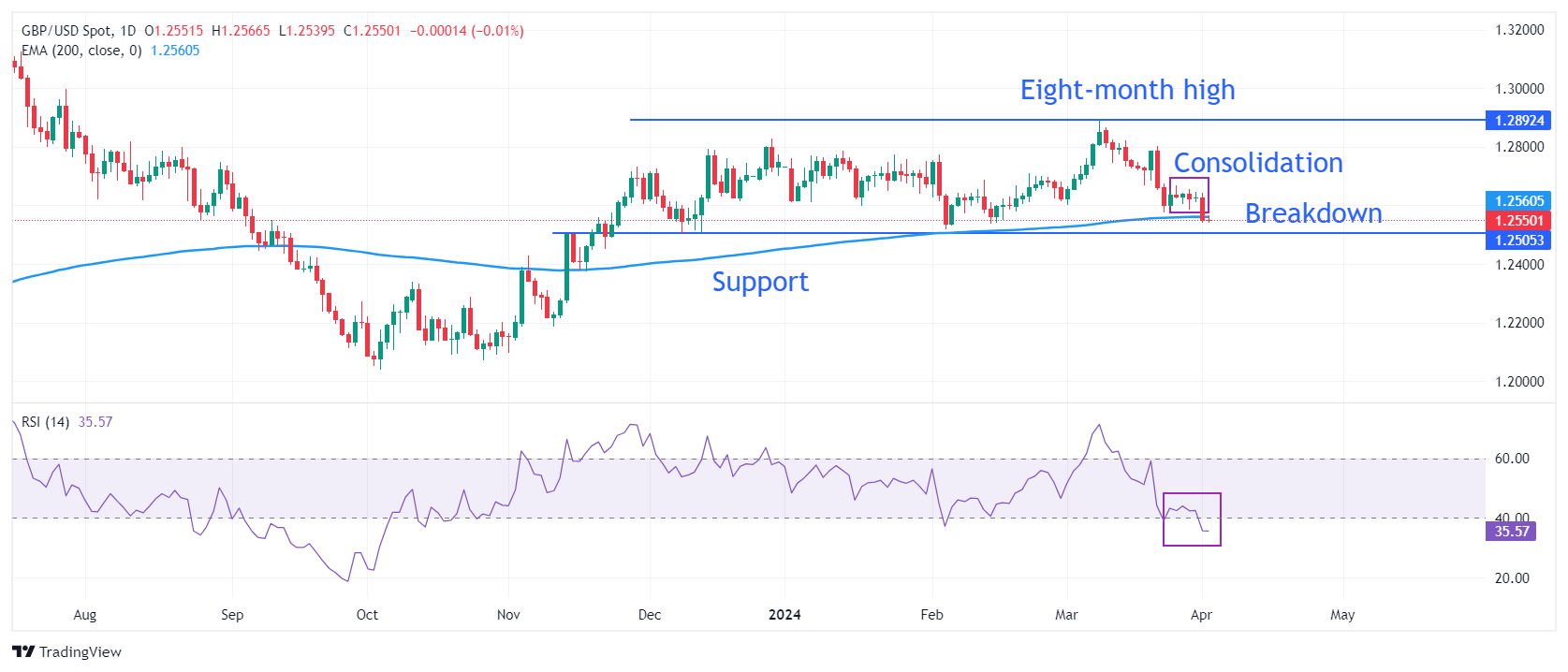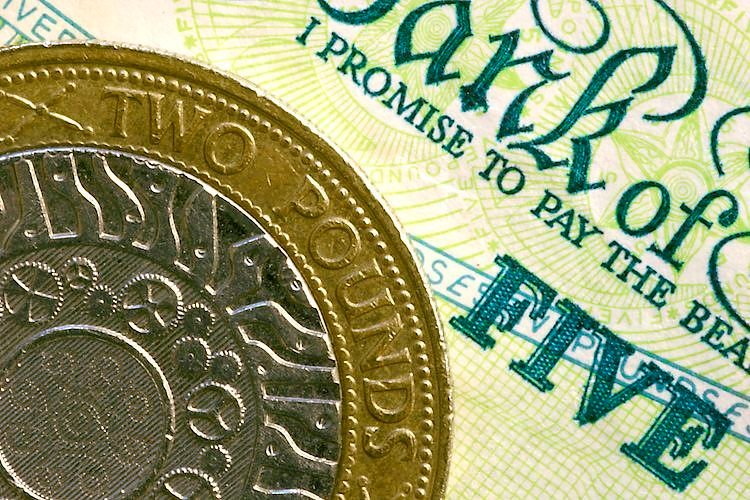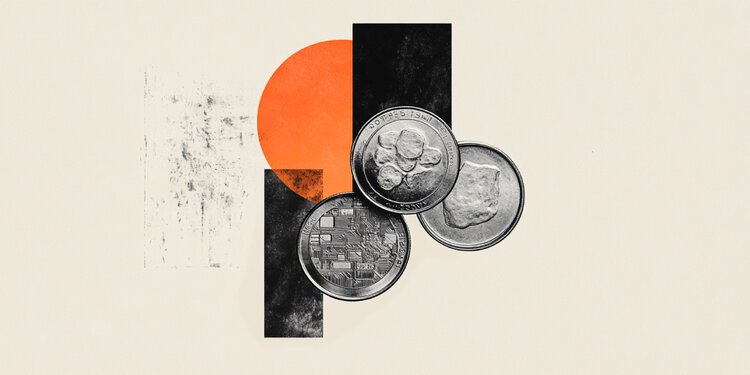- The Pound Sterling consolidates, although easing UK inflation keeps its broader appeal weak.
- UK’s shop price inflation grew 1.3% in March, the slowest pace since December 2021.
- Easing Fed rate cut bets for June have dented market sentiment.
The Pound Sterling (GBP) trades in a narrow range near a six-week low around 1.2540 in Tuesday’s London session. The broader appeal of the GBP/USD pair is poor, mainly due to weak market sentiment. The near-term outlook of the Cable is downbeat as traders push back prospects for the Federal Reserve’s (Fed) first rate cut, which is expected in the June meeting, after keeping them higher for more than two years. The prospect of interest rates remaining higher for longer than anticipated benefits the US Dollar and weighs on the pair.
The robust recovery in the United States manufacturing sector, which exhibits a strong economic outlook, forced traders to roll back their bets on rate cuts by June. Higher demand for the US manufacturing sector indicates solid household spending, allowing Fed policymakers to avoid rushing for interest rate cuts. Upbeat economic prospects buy significant time for the Fed to observe more inflation data before jumping on rate cuts.
Cautious market sentiment weighs heavily on the Pound Sterling. On the contrary, the US Dollar Index (DXY) prints a fresh four-month high slightly above 105.00 amid a cheerful safe-haven bid and good prospects for the US economy. More uncertainty is anticipated in global markets as the US Bureau of Labor Statistics (BLS) will report the Nonfarm Payrolls (NFP) data for March on Friday. But before that, investors will focus on the US JOLTS Job Openings data for February, which will be published at 14:00 GMT.
Daily digest market movers: Pound Sterling consolidates while US Dollar hovers near four-month high
- The Pound Sterling seems vulnerable near more than six-week low around 1.2540 due to multiple headwinds. Slowing United Kingdom inflation and dismal market mood have weighed heavily on the Pound Sterling.
- The British Retail Consortium (BRC) reported on Tuesday that the UK’s shop price inflation grew 1.3% in March, its slowest pace in more than two years. This marks a deceleration from the 2.5% increase seen in February. Shop price inflation fell due to softer prices of both food and non-food items. Non-food prices rose meagrely by 0.2% from the 1.3% rise seen a month earlier, while food prices grew by 3.7%, down from 5.0%.
- BRC Chief Executive Helen Dickinson said fierce competition among retailers to bring prices down for their customers has eased shop price inflation to its lowest since December 2021. However, she warned that increasing cost pressures could put the progress in bringing down inflation at risk.
- Lower shop price inflation could be a relief for Bank of England policymakers, providing them with ground for reducing interest rates after keeping them at high levels for more than two years. Currently, the market expects that the BoE will begin reducing interest rates from the June meeting.
- Going forward, investors await the S&P Global/CIPS Manufacturing PMI final data for March, which will be published on Tuesday. The factory data is forecasted to have remained unchanged from its preliminary reading of 49.9, which came in marginally below the 50.0 threshold that separates expansion from contraction.
- Meanwhile, market sentiment has turned downbeat as traders have pared expectations for the Federal Reserve to cut interest rates in June. The prospects for a Fed rate cut that month eased after the United States Institute of Supply Management (ISM) reported stronger-than-expected Manufacturing PMI data for March. The Manufacturing PMI landed above the 50.0 threshold for the first time after 16 straight months of contraction. The US factory sector seems to be recovering from the high interest rate environment, which has weighed on activity for the last year and a half.
Technical Analysis: Pound Sterling declines toward 1.2500

The Pound Sterling delivers a breakdown of the consolidation formed in the range between 1.2575 and 1.2675 last week. The Cable seems vulnerable as it trades near the 200-day Exponential Moving Average (EMA) at 1.2568, indicating weak demand in the longer term.
On a broader time frame, the horizontal support from December 8 low at 1.2500 could provide further cushion to the Pound Sterling. Meanwhile, the upside is expected to remain limited near an eight-month high of around 1.2900.
The 14-period Relative Strength Index (RSI) dips below 40.00. If it sustains below this level, bearish momentum will trigger.
Pound Sterling FAQs
The Pound Sterling (GBP) is the oldest currency in the world (886 AD) and the official currency of the United Kingdom. It is the fourth most traded unit for foreign exchange (FX) in the world, accounting for 12% of all transactions, averaging $630 billion a day, according to 2022 data. Its key trading pairs are GBP/USD, aka ‘Cable’, which accounts for 11% of FX, GBP/JPY, or the ‘Dragon’ as it is known by traders (3%), and EUR/GBP (2%). The Pound Sterling is issued by the Bank of England (BoE).
The single most important factor influencing the value of the Pound Sterling is monetary policy decided by the Bank of England. The BoE bases its decisions on whether it has achieved its primary goal of “price stability” – a steady inflation rate of around 2%. Its primary tool for achieving this is the adjustment of interest rates. When inflation is too high, the BoE will try to rein it in by raising interest rates, making it more expensive for people and businesses to access credit. This is generally positive for GBP, as higher interest rates make the UK a more attractive place for global investors to park their money. When inflation falls too low it is a sign economic growth is slowing. In this scenario, the BoE will consider lowering interest rates to cheapen credit so businesses will borrow more to invest in growth-generating projects.
Data releases gauge the health of the economy and can impact the value of the Pound Sterling. Indicators such as GDP, Manufacturing and Services PMIs, and employment can all influence the direction of the GBP. A strong economy is good for Sterling. Not only does it attract more foreign investment but it may encourage the BoE to put up interest rates, which will directly strengthen GBP. Otherwise, if economic data is weak, the Pound Sterling is likely to fall.
Another significant data release for the Pound Sterling is the Trade Balance. This indicator measures the difference between what a country earns from its exports and what it spends on imports over a given period. If a country produces highly sought-after exports, its currency will benefit purely from the extra demand created from foreign buyers seeking to purchase these goods. Therefore, a positive net Trade Balance strengthens a currency and vice versa for a negative balance.

























